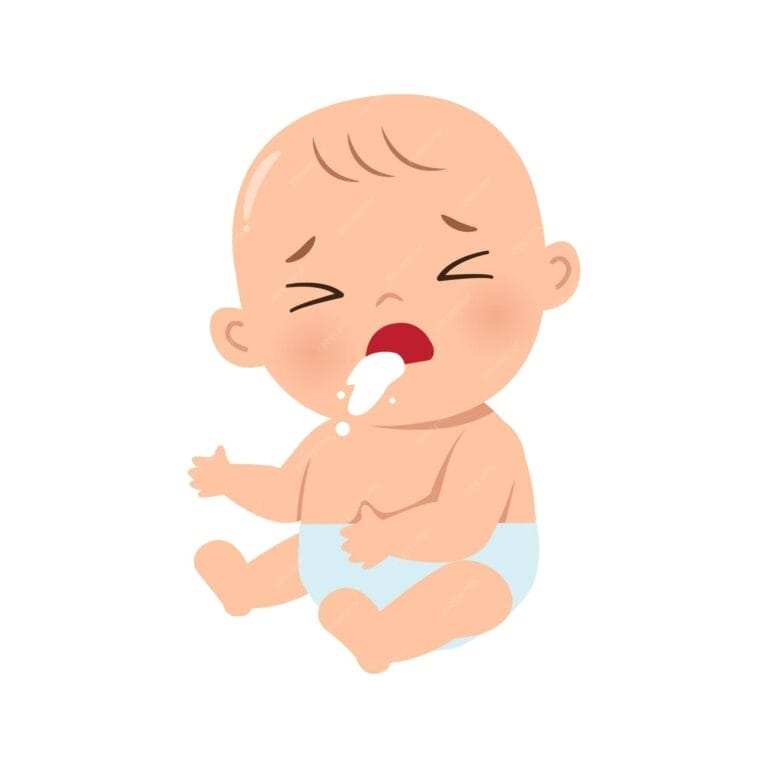10 Tell-Tale Signs of Your Kid’s Bronchiolitis

No Time to Read? Here’s a Snappy Summary of This Article
- Sneaky Invader: Bronchiolitis, a viral lung infection, quietly strikes infants, causing coughing, wheezing, and difficulty breathing.
- Tiny Tot Trouble: It mainly targets babies, posing a higher risk for those under six months, leading to potential hospitalization.
- RSV Rumble: Respiratory Syncytial Virus (RSV) often initiates bronchiolitis, making it a prime suspect in this respiratory ordeal.
- Breathing Blues: Watch for rapid or labored breathing—key indicators that your little one might be grappling with bronchiolitis.
- Mucus Mayhem: Excessive mucus production can block airways, making it harder for your child to breathe comfortably during this infection.
- Cautious Care: Prompt medical attention is crucial; monitor your child’s symptoms closely and seek professional help if bronchiolitis is suspected.
Table of Contents
- No Time to Read? Here’s a Snappy Summary of This Article
- 1. Sign 1: Coughing
- 2. Sign 2: Wheezing
- 3. Sign 3: Rapid Breathing
- 4. Sign 4: Fever
- 5. Sign 5: Reduced Appetite
- 6. Sign 6: Irritability
- 7. Sign 7: Dehydration
- 8. Sign 8: Runny Nose
- 9. Sign 9: Vomiting after Feeding
- 10. Sign 10: Blueish Skin
- Meanwhile, Check Out Tropika Club’s Ecosystem of Websites
Introduction
Bronchiolitis is a pretty common breathing problem that little kids, especially those under two years old, can get. In Singapore, it’s super important for parents to know the signs so they can take their child to the doctor quickly. So, in this article, we’re going to talk about the 10 signs that show a child might have Bronchiolitis. It’s all about helping parents keep their little ones healthy!

1. Sign 1: Coughing
The first sign of Bronchiolitis is often a dry, persistent cough. This is due to the inflammation in the bronchioles, the small airways in the lungs. The cough can be distressing for both the child and parents, but it’s important to remember that it’s a normal part of the body’s response to the virus.

2. Sign 2: Wheezing
A wheezing sound when your child breathes out is another common sign of Bronchiolitis. This is caused by the narrowed airways and increased mucus production. It can be particularly noticeable when your child is sleeping or feeding.

3. Sign 3: Rapid Breathing
Rapid breathing or difficulty breathing is a serious sign of Bronchiolitis. If your child’s nostrils are flaring or their belly is moving more than usual while breathing, seek medical attention immediately. This can be an indication that your child is working harder to breathe due to the inflammation in their lungs.

4. Sign 4: Fever
While not all children with Bronchiolitis will have a fever, it can be a sign of the illness. Monitor your child’s temperature and seek medical advice if it’s consistently high. A fever can make your child feel uncomfortable and more irritable than usual.

5. Sign 5: Reduced Appetite
If your child has Bronchiolitis, they may eat less than usual. This could be due to difficulty breathing or general discomfort. It’s important to encourage your child to eat small, frequent meals and to stay hydrated.

6. Sign 6: Irritability
Children with Bronchiolitis may become irritable or seem less active than usual. This could be due to discomfort or fatigue from the effort of breathing. It’s important to keep your child comfortable and allow them plenty of rest during this time.
_
Read Also:
6 Things Everyone Gets Wrong About Cats
_

7. Sign 7: Dehydration
Dehydration can occur if your child is not eating or drinking enough due to illness. Signs include fewer wet diapers, dry mouth, and no tears when crying. If you notice these signs, it’s important to seek medical advice immediately as young children can become dehydrated quickly.

8. Sign 8: Runny Nose
A runny nose can be a sign of Bronchiolitis, especially if accompanied by other symptoms on this list. It’s usually one of the first symptoms to appear and can last for several days before other symptoms develop. While it can be distressing for your child, it’s important to remember that it’s a normal part of the body’s response to the virus.

9. Sign 9: Vomiting after Feeding
Vomiting after feeding can be a sign of Bronchiolitis. This can occur when the effort of breathing interferes with feeding, or if mucus drains into the stomach causing nausea. If this happens frequently, it’s important to seek medical advice as it can lead to dehydration.
:max_bytes(150000):strip_icc()/GettyImages-1215166547-4adf5d3de374431bab5960948f11ba3b.jpg)
10. Sign 10: Blueish Skin
If your child’s skin, lips, or fingernails look blue, it’s a sign they’re not getting enough oxygen and you should seek medical help immediately.
Conclusion
Recognizing these signs early is key to managing Bronchiolitis in children and preventing complications. In Singapore, where we live in close community spaces like HDB flats and attend crowded schools and childcare centres, it’s especially important to stay vigilant and consult a healthcare professional if you suspect your child may have Bronchiolitis.

Frequently Asked Questions (FAQ)
Q: How is bronchiolitis diagnosed in Singapore?
A In Singapore, doctors typically diagnose bronchiolitis based on clinical symptoms. A physical examination and, if necessary, a chest X-ray may be conducted.:
Q: Can bronchiolitis be treated at home?
A: While mild cases may be managed at home, seeking professional medical advice is crucial to ensure proper care, especially for infants.
Q: What precautions can parents take during the RSV season in Singapore?
A: During the Respiratory Syncytial Virus (RSV) season in Singapore, parents should prioritize hand hygiene, avoid crowded places, and ensure proper ventilation at home.
Q: Are there specific risk factors for bronchiolitis in tropical climates like Singapore?
A: High humidity in tropical climates can exacerbate respiratory infections. It’s essential to keep living spaces well-ventilated to reduce the risk of bronchiolitis.
Q: Is bronchiolitis more common in certain age groups in Singapore?
A: Infants under six months are at a higher risk of bronchiolitis. Understanding age-specific risks is vital for parents in Singapore to stay vigilant.
Q: How can I differentiate bronchiolitis from a common cold in my child?
A: Look out for signs like rapid or labored breathing, which are more pronounced in bronchiolitis compared to a typical cold. Seek medical advice for confirmation.

Have an Article to Suggest?
Tropika Club is always looking for new and exciting content to feature in their magazine and they value the input of our readers. If you have any noteworthy content or articles that you believe would be a great addition to Tropika Club’s magazine, we are open to suggestions and encourage you to reach out to us via email at [email protected]. By doing so, Tropika Club values your expertise and knowledge in the matter and appreciates your willingness to help. We will review your recommendations and update our list accordingly
Meanwhile, Check Out Tropika Club’s Ecosystem of Websites
Tropika Club Magazine – Tropika Club Magazine is a Singapore-based publication that features articles on a wide range of topics with a focus on local businesses and content for the region. The magazine emphasizes supporting local businesses through its #SupportLocal initiative, which includes coverage of everything from neighborhood hawker stalls to aesthetic clinics in town. In addition to highlighting local businesses, Tropika Club Magazine also covers a variety of local content, including beauty, lifestyle, places, eats, and what’s on in Singapore and the Asia Pacific region.



